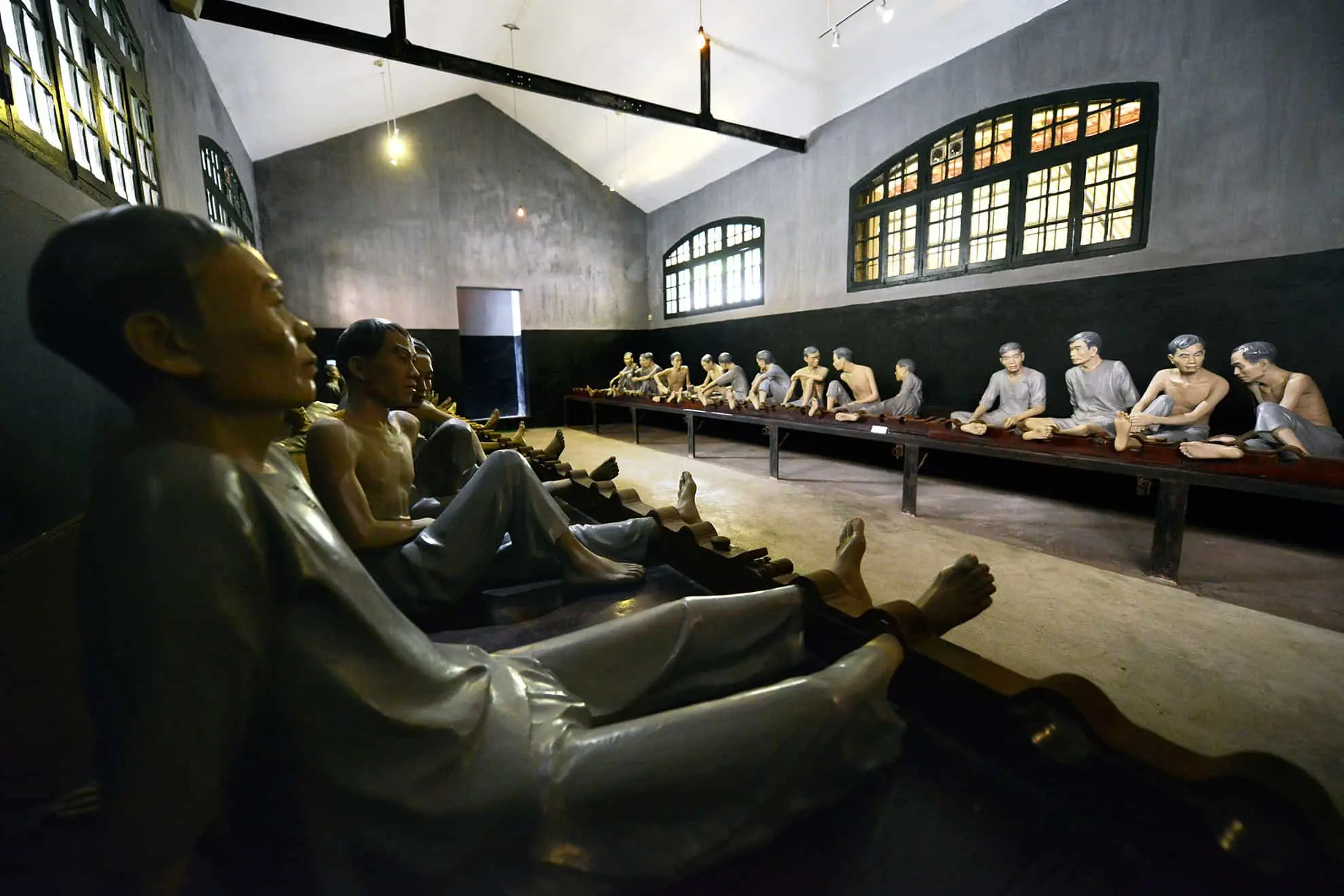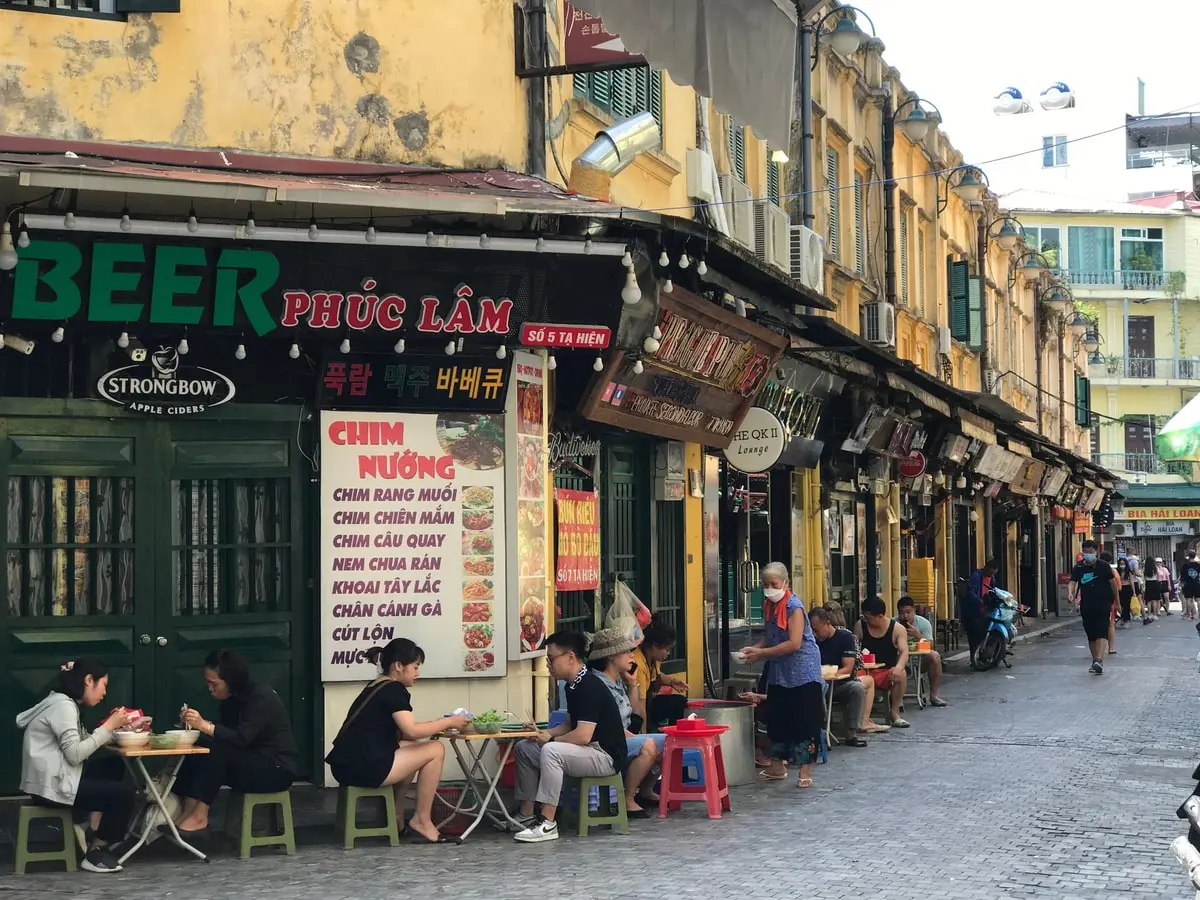Hanoi Vietnam stands as a city of contrasts. It is the heart of the nation, the Capital of Vietnam. EssentialVietNamtravel.com offers this guide to help you explore its depths. This city pulses with energy. Ancient temples sit near modern cafes. The scent of street food fills the air. Millions live and work here. Understanding Hanoi is key to understanding Vietnam.
This guide provides practical information. We cover history, sights, food, and travel logistics. We aim for clarity. Our facts help you plan your trip. We want you to experience Hanoi fully. This city is located in Northern Vietnam. It rests within the expansive Red River Delta. Its location shaped its history and culture. Prepare to discover a unique corner of Southeast Asia, indeed of Asia itself. This journey starts now. Learn about Hanoi. Plan your visit. Find your way. Enjoy local life. Let EssentialVietNamtravel show you the way.
Hanoi: Exploring the Capital of Vietnam
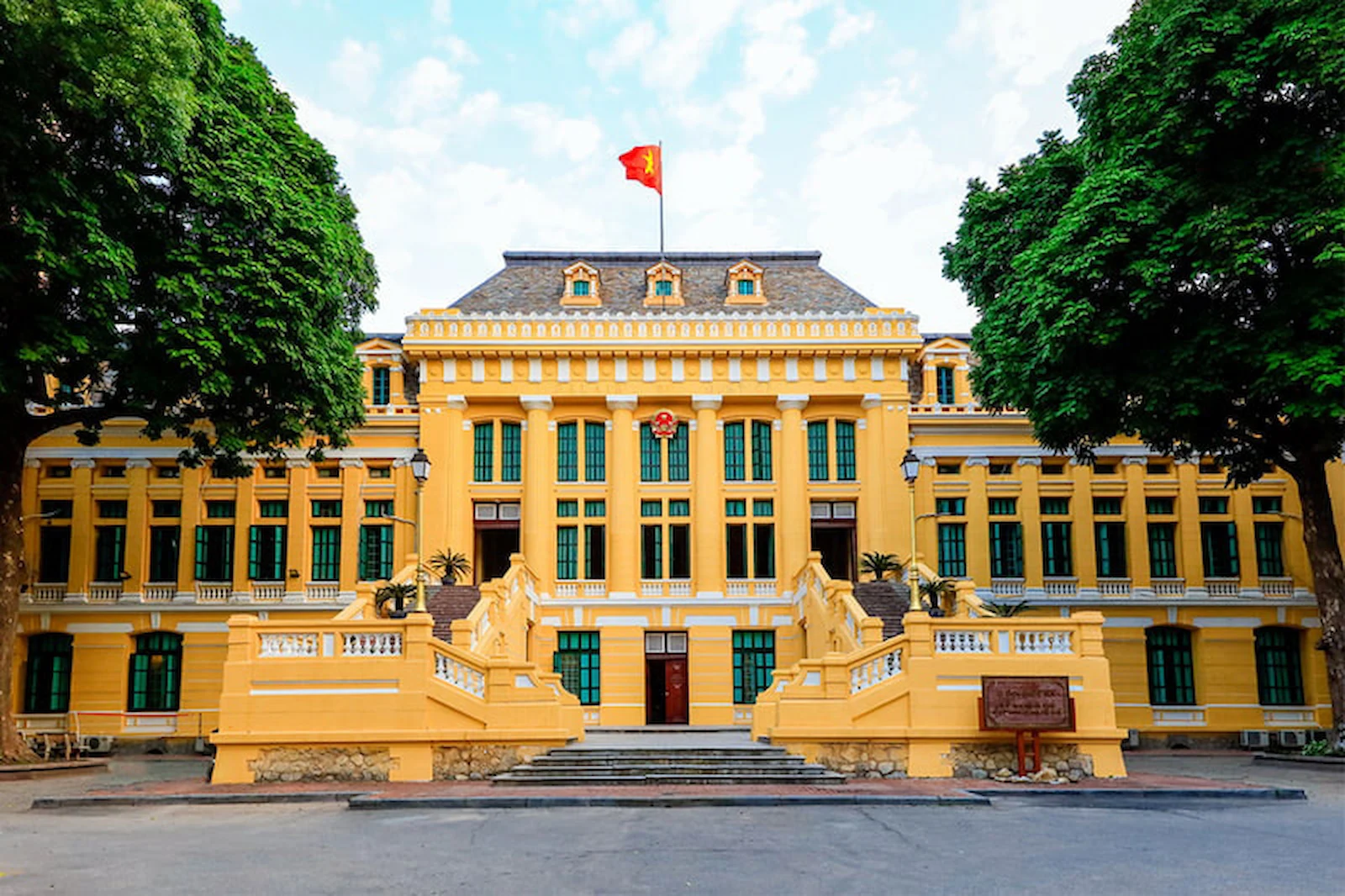
Hanoi holds the official Status of Capital. This title is not just administrative. It reflects deep historical and cultural significance. Hanoi Is Capital Of Vietnam, a role it has played for much of the last millennium, though with interruptions. Its position shapes the nation’s Politics and influences its Economy. As a major city, Hanoi drives much of the country’s development. It stands as a center of power and learning. Hanoi is politically significant, evident in the governmental buildings clustered around Ba Dinh Square.
The city’s Location is strategic. Situated in Northern Vietnam, it commands the fertile Red River Delta. This geography facilitated its rise. The Red River flows through Hanoi, a vital waterway throughout its History. This river system supported agriculture and trade. It connected Hanoi to the coast and other Provinces. Compared to the bustling energy of Ho Chi Minh City in Southern Vietnam, Hanoi often feels more traditional, perhaps more rooted in its past. Yet, it is far from stagnant. Urban Development proceeds rapidly, blending new structures with historical districts. Travel between the north and south highlights the regional differences within Vietnam.
Hanoi has a rich history. Its origins stretch back over a thousand years. It was formally established as the Ly Dynasty Capital in 1010 AD. This makes it a city with a Millennial Capital History. This long past is visible everywhere. You see it in the architecture, the street layouts, and the enduring traditions. French Colonialism left a distinct mark. From the late 19th century, France influenced the city’s design. This resulted in the unique French Colonial Architecture Blend seen today. Wide boulevards and grand villas sit alongside traditional Vietnamese tube houses. This visual dialogue tells a story of cultural exchange and historical layers.
The Population of Hanoi reflects its importance. Around 5.2 Million people call the metropolitan area home. This dense population contributes to the city’s vibrant energy, particularly the notable High Motorcycle Density. The official City Area covers roughly 3359 km2, encompassing urban, suburban, and some surprisingly Rural areas within its administrative boundaries. This size makes it one of the largest cities in Southeast Asia by area.
Hanoi offers cultural experiences unlike anywhere else. It attracts Tourists from across the globe. People come seeking authentic Vietnamese culture, incredible food, and historical understanding. The city is a gateway to exploring Northern Vietnam. Its accessibility makes it a primary hub for Southeast Asian Travel. EssentialVietNamtravel.com finds that Hanoi is accessible for travel, with good infrastructure connecting it domestically and internationally.
Understanding Hanoi’s role as the Capital, its unique location, its deep history, and its modern dynamism is the first step to appreciating this complex and fascinating City. Hanoi is not just a place on a map; it’s a living museum, a political center, and a cultural heartland, all rolled into one compelling destination in Asia. Its importance extends beyond Vietnam, influencing the broader region.
Discovering Hanoi Attractions: Hoan Kiem Lake, the Old Quarter, and Beyond
![]()
Hanoi Attractions offer a glimpse into the soul of Vietnam. The city is dotted with sites of historical, cultural, and natural beauty. Exploring these places provides context to the city’s long narrative. EssentialVietNamtravel.com recommends starting your exploration centrally.
Hoan Kiem Lake lies at the very heart of Hanoi. This body of water is more than just scenic; it’s legendary. Its name translates to “Lake of the Returned Sword,” referencing a famous legend involving Emperor Le Loi and a magic sword. The Hoan Kiem Lake Centrality makes it a focal point for locals and visitors. People gather here to exercise, socialize, or simply enjoy the relative tranquility. Ngoc Son Temple sits on a small island in the lake, accessible by a distinctive red bridge. The iconic Turtle Tower stands on another islet, a poignant symbol of Hanoi. This Landmark is unmissable. Spending time here helps you feel the city’s pulse.
Adjacent to the lake is the famous Hanoi Old Quarter. This area is a maze of streets dating back centuries. It Contains Old Quarter atmosphere unlike any other part of the city. Historically, the Old Quarter consisted of 36 streets, each specializing in a particular trade, like silver, silk, or herbs. While specialization has faded somewhat, the narrow streets retain their historic character. The Vibrant Old Quarter buzzes with activity day and night. Shops sell everything imaginable. Street food vendors offer delicious snacks.
The High Motorcycle Density is particularly noticeable here; navigating requires attention. Exploring the Old Quarter on foot is the best way to absorb its unique energy. This Landmark area showcases traditional Vietnamese urban life amidst the French Colonial Architecture influences visible in some buildings.
Moving west from the lake and Old Quarter, you encounter significant historical sites. The Temple of Literature (Van Mieu – Quoc Tu Giam) is a must-visit. Founded in 1070, it became Vietnam’s first national university. This serene complex features traditional courtyards, pavilions, and stone steles bearing the names of graduates. It offers insight into Vietnam’s Confucian heritage and reverence for learning. This Landmark stands as a testament to Vietnamese History.
Further west lies Ba Dinh Square. This vast open space holds immense political significance. It was here that Ho Chi Minh declared Vietnam’s independence in 1945. The imposing Ho Chi Minh Mausoleum dominates one side of the square. Visitors can view the preserved body of the revolutionary leader here (check opening times and dress code beforehand). Nearby are other important sites like the Presidential Palace and Ho Chi Minh’s Stilt House. This area reflects Hanoi’s role as the nation’s Capital.
Other notable Hanoi attractions include the One Pillar Pagoda, known for its unique lotus-inspired architecture near the Ho Chi Minh Mausoleum complex. The Flag Tower of Hanoi, part of the Hanoi Citadel, is a powerful symbol of the city’s resilience. For lovers of the arts, the Hanoi Opera House is a stunning example of French Colonial Architecture, hosting performances throughout the year. These landmarks contribute to the rich tapestry of sights Hanoi offers.
Exploring these sites helps piece together the city’s complex past and present. Hanoi is a city where history lives on every corner, inviting discovery. EssentialVietNamtravel.com encourages visitors to allow ample time to explore these diverse and meaningful locations.
Experiencing Vietnamese Culture and Food in Hanoi
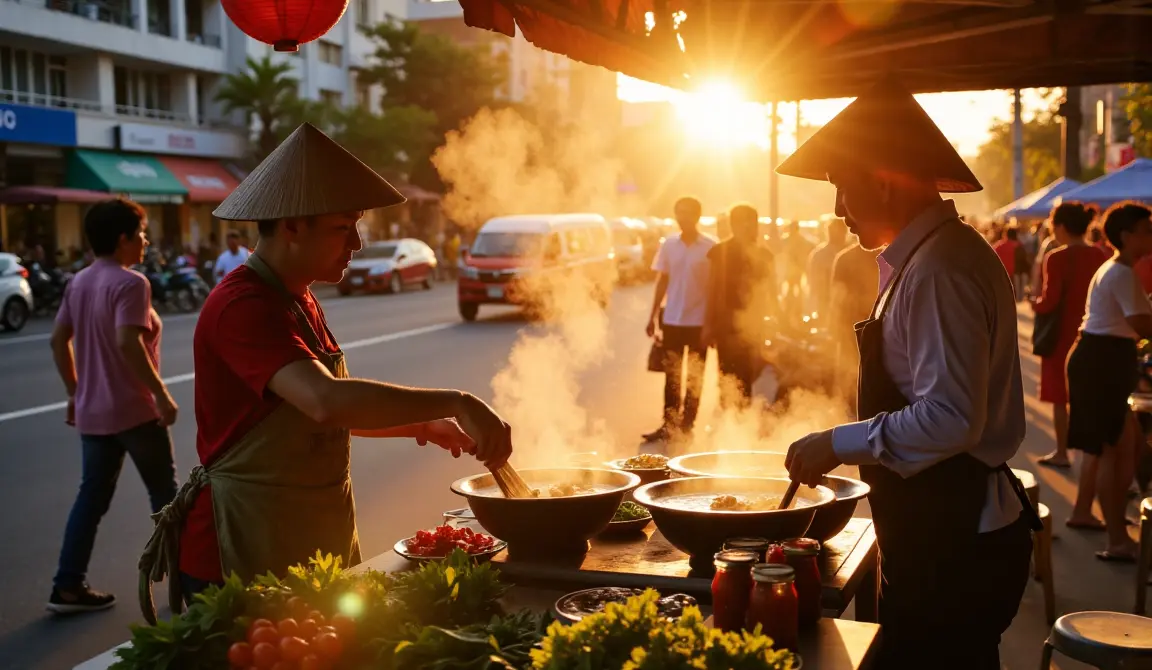
Hanoi is a prime location to immerse yourself in Vietnamese culture. The city’s traditions are deeply ingrained in daily life. You can observe them in the bustling markets, serene temples, and lively street scenes. EssentialVietNamtravel.com believes understanding the culture enhances any visit. Vietnamese culture here is a blend of ancient customs, Confucian values, influences from French Colonialism, and modern adaptations. Social Life often revolves around family and community. You’ll see multi-generational families dining together or neighbors chatting on small plastic stools lining the sidewalks.
One of the most accessible ways to experience Hanoi’s culture is through its cuisine. Hanoi food is legendary throughout Vietnam and the world. Vietnamese Cuisine here focuses on fresh ingredients, balanced flavors, and often involves interactive dining. Pho is perhaps Hanoi’s most famous culinary export. This noodle soup, typically with beef (pho bo) or chicken (pho ga), is a breakfast staple but enjoyed all day. Finding the best pho restaurants in hanoi old quarter is a popular quest for visitors. Look for bustling local spots with steaming cauldrons.
Another essential Hanoi dish is Bun Cha. This features grilled pork patties and slices served in a bowl of tangy dipping sauce with rice vermicelli noodles and fresh herbs. President Obama famously enjoyed Bun Cha during his visit.
For a unique culinary adventure, seek out Cha Ca La Vong Street. This street is famous for, and named after, a specific dish: Cha Ca. It consists of grilled fish, typically catfish or snakehead, marinated in turmeric and galangal, then pan-fried tableside with dill and spring onions. Served with vermicelli noodles, peanuts, and shrimp paste, it’s a flavor explosion. While the original restaurant bearing the street’s name exists, other establishments nearby also serve excellent versions.
A Hanoi food tour is an excellent way to sample these dishes and more, guided by local experts who can navigate the vibrant street food scene. Don’t forget Bia Hoi Culture. Bia Hoi is fresh, light draft beer, brewed daily and served very cheaply at simple street-side stalls. Joining locals for a glass of Bia Hoi is a quintessential Hanoi experience.
Beyond food, Hanoi offers rich cultural performances. The Water Puppet Theatre is a unique Vietnamese art form that originated in the Red River Delta centuries ago. Hanoi is considered the Water Puppetry Hub. Performances take place on a stage filled with water, with puppets manipulated by hidden puppeteers using long bamboo rods. Shows depict scenes from rural life, historical events, and legends, often accompanied by live traditional music. The Thang Long Water Puppet Theatre near Hoan Kiem Lake is the most famous venue. Witnessing a performance provides insight into traditional Vietnamese storytelling and artistic skill – a true Water Puppet Theatre Origin experience.
Everyday life itself is a cultural display. The High Motorcycle Density shapes the city’s rhythm. Observe the intricate dance of traffic. Notice the blend of old traditions and modern aspirations. Engage respectfully with local people. Learning a few basic Vietnamese phrases goes a long way. EssentialVietNamtravel.com recommends visiting local markets like Dong Xuan Market to see commerce in action and perhaps purchase souvenirs. Participating in these everyday cultural elements offers a deeper understanding than just visiting monuments. Hanoi offers cultural experiences that are authentic and memorable, reflecting its status as a vibrant center of Vietnamese life.
Planning Your North Vietnam Travel: Getting to and Around Hanoi
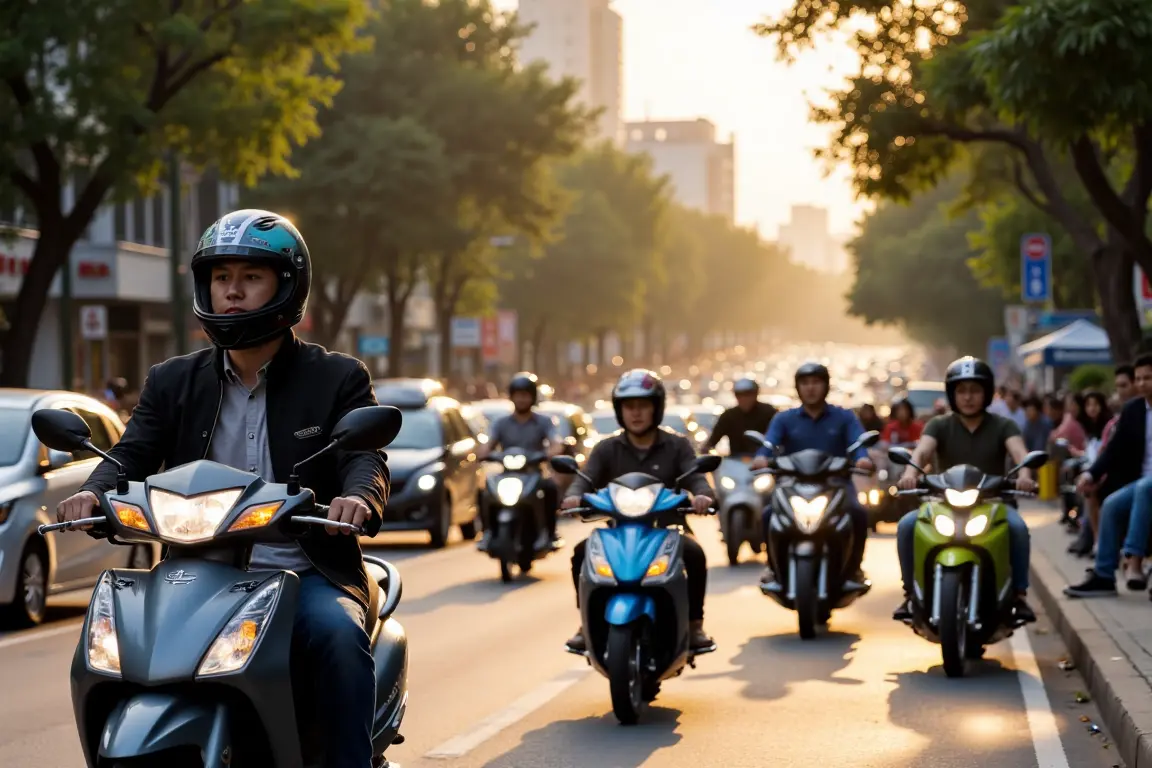
Effective Travel Planning Visit Hanoi ensures a smoother, more enjoyable trip. EssentialVietNamtravel.com provides this guidance for your North Vietnam travel, focusing on logistics for Hanoi. Understanding how to get there and navigate the city is crucial. Hanoi is generally considered safe for tourists, but like any major city, requires awareness. Is hanoi vietnam safe for tourists? Yes, with standard precautions against petty theft and traffic awareness.
Most international visitors arrive via Noi Bai International Airport (HAN); you can easily compare flight options to Hanoi (HAN) online. This Airport is located about 28 miles (45 km) north of the city center. Several options exist for the hanoi airport to city center transfer. Taxis are readily available outside the terminal; agree on the fare or ensure the meter is used. Reputable taxi companies include Mai Linh (green) and Taxi Group (white with red/blue stripe). Ride-sharing apps like Grab are also popular and often offer competitive prices.
Public buses offer the cheapest option (like Bus 86, the express bus) but require navigating routes and luggage. Finally, pre-booked private transfers offer convenience, especially for groups or late arrivals. EssentialVietNamtravel.com recommends confirming your transfer method before arrival.
Once in the city, navigating Hanoi requires some strategy. The High Motorcycle Density defines traffic flow, especially in the Old Quarter. Walking is excellent for exploring specific areas like Hoan Kiem Lake and the Old Quarter, but distances between major sites can be significant.
Taxis and Grab (cars or motorbikes) are abundant and relatively inexpensive for longer distances. Cyclos (three-wheeled bicycle rickshaws) offer a slow-paced, traditional way to see the sights but agree on the price and route beforehand. Renting a motorbike is possible for experienced riders comfortable with chaotic traffic, but not recommended for novices. Public buses cover extensive routes but can be crowded and confusing for non-locals.
Planning Your Hanoi Trip? Find the Best Flight Deals!
Use our recommended flight search tool to compare prices and find the most convenient options for your travel dates. Start planning your adventure today!
Your travel plan should consider the duration. Planning things to do in hanoi for 3 days allows covering the main highlights: Hoan Kiem Lake, Old Quarter, Temple of Literature, Ho Chi Minh Mausoleum, and enjoying food and culture. Longer stays allow for day trips to surrounding Provinces or deeper exploration of specific neighborhoods. Consider the weather. Hanoi has a Humid Subtropical Climate with distinct seasons. The weather in hanoi vietnam in december, for example, is generally cool and dry, making it a popular time to visit. Summers (June-August) are hot and humid with potential for heavy rain. Spring and Autumn offer more pleasant temperatures.
Practical considerations include Currency and Timezone. The official Currency is the Vietnamese Dong (VND). ATMs are widely available. Credit cards are accepted in larger hotels, restaurants, and shops, but cash is essential for street food, local markets, and smaller establishments. Hanoi operates on Indochina Time (ICT), which is UTC+7. Regarding safety, be mindful of belongings in crowded areas and be cautious when crossing streets due to the dense traffic.
EssentialVietNamtravel.com helps with Navigational Find specific locations in Hanoi through detailed maps and local tips. Finding Local Services Find restaurants shops in Hanoi is part of the adventure; don’t hesitate to explore side streets. Hanoi is accessible for travel, serving as a crucial hub for exploring Northern Vietnam and beyond into Southeast Asia. Considering the city’s Economy and Environment is also relevant; responsible tourism helps preserve Hanoi’s unique character.
Proper planning allows you to fully appreciate the history, culture, and energy of Vietnam’s capital. Comparison Compare Hanoi to other places like Ho Chi Minh City or even Foreign destinations highlights its unique blend of tradition and modernity.
Further Reading on Essential Vietnam Travel
Conclusion
Hanoi, Vietnam, the nation’s Capital City, offers an unforgettable Travel experience. From the ancient streets of the Old Quarter Landmark to the serene Hoan Kiem Lake Landmark, the city breathes History. Its Location in Northern Vietnam on the Red River, combined with its Millennial Capital History and French Colonial Architecture influences, creates a unique urban tapestry. Experience the vibrant Vietnamese Culture through its incredible Food like Pho and Bun Cha, the traditional Water Puppetry, and the energetic Bia Hoi Culture. Discover key Hanoi Attractions such as the Temple of Literature Landmark and the Ho Chi Minh Mausoleum in Ba Dinh Square.
Planning your North Vietnam travel involves understanding logistics like getting from Noi Bai International Airport and navigating the High Motorcycle Density. EssentialVietNamtravel.com trusts this guide provides the foundational knowledge and practical steps needed. Remember the Currency is the Vietnamese Dong, the Timezone is Indochina Time, and the Climate is Humid Subtropical.
Hanoi Is Capital Of Vietnam, a major city Attracts Tourists with its blend of history, culture, and dynamism. It’s a gateway to Southeast Asian Travel, offering rich cultural experiences and insights into Vietnamese History and contemporary Social Life. EssentialVietNamtravel.com encourages you to embrace the energy, savor the flavors, and explore the depths of this captivating city in Asia.


